As time goes on, we humans tend to possess an ever-increasing number of powered devices. These devices do so many great things for us, which is why we want to bring them with us wherever we go. Yet thankfully the world isn’t covered in a grid of easy to access power outlets, so we have portable power supplies to keep our gear powered up when we’re off grid. A good power supply can provide any type of power needed to run all sorts of devices, from phones and fridges to power tools. Likewise, the power supply also needs to have a significant power reserve – enough to get through days of adventure, or to keep the essentials powered up during hours of a grid power outage at home. All of this functionality needs to fit into a portable, durable package that can hold up to extensive off-road use and perform in both the heat and the cold. For the last year, I’ve been putting the Wagan Tech Lithium Cube 1200 to the test to see if it can keep everything powered up, no matter what I’m getting into.

The Wagan Tech Lithium Cube 1200 is the largest in a series of three power supplies that all run off of Lithium-Ion batteries. The 1200 features a 1166 Watt-hour battery that’s coupled to a host of input and output ports. Looking at the front of the device and working left to right, you’ll see the Anderson Power Pole (APP) for solar input which feeds a MPPT controller and a barrel connector for the included AC or DC charging cable. Below that you’ll find a 12V car style outlet and two barrel connectors for 12V DC output at 5A each. Centered in the middle of the unit is the full color display, and below that is a gaggle of USB ports. Here you’ll find a 100W USB PD port that can supply power and charge the unit (no more packing a special charger!) a 27W USB PD, two Quick Charge 3.0 ports, and two USB 5V, 2.4A ports. On the right side of the until you’ll find the three AC ports, which supply 120V pure sine wave ac power. The inverter is rated at 1350W surge and 1000W continuous output.



The display on the Lithium Cube shows all of the relevant information – state of charge, busses turned on, current power consumption, and time til empty. There is no way to manually cycle through the information display.

Charging the Lithium Cube can be done in several ways. The included AC and DC cables allow you to charge the unit from an AC power source, or a 12V car-style power outlet respectively. I do appreciate that the DC cable is just a cable, where as other lithium power supplies I’ve used in the past have a big awkward charge controller box (think of the brick in a laptop power supply) that you have to contend with. As previously mentioned, you can also charge the unit using the USB PD 100W port, which is great for when you want to keep your accessory cable count as low as possible.

Charging with solar power is plug and play easy thanks to the very common Anderson Power Pole connector and integrated MPPT controller. The lithium cube can handle a maximum of 100W at 12V and 200W at 24V of solar input, and Wagan Tech has two different solar panel bundles available the Lithium Cube 1200 that feature either a 60W foldable panel or a 100W folds-in-half panel.
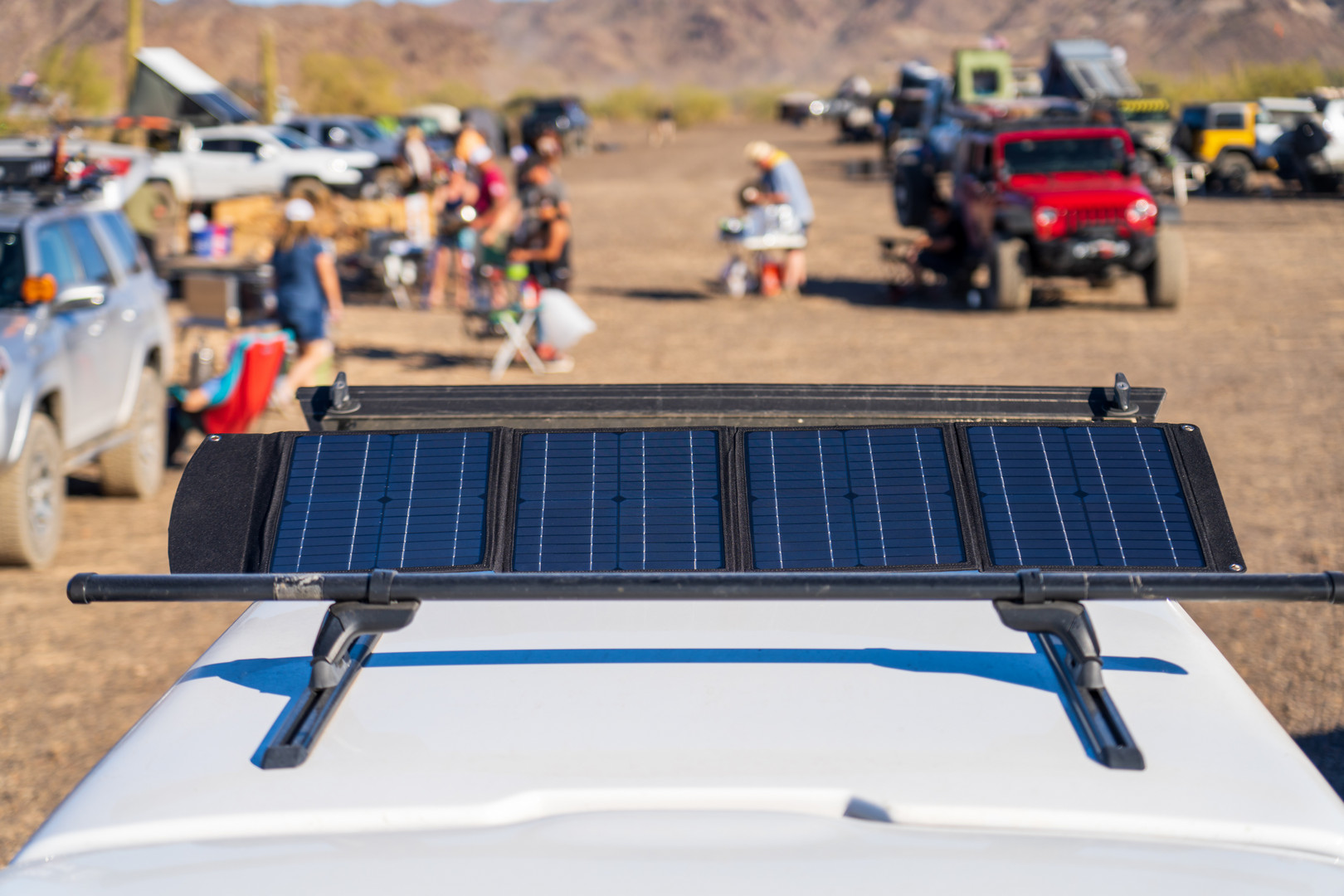


I’ve been using the 60W panel with the Lithium Cube, and it’s proven to be a very efficient panel. Thanks to the APP connectors, I was able to quickly make an extension cable for the panel so that no matter where my Cube was, I was able to get my panel into full sun. By simply adjusting the panel several times throughout the day to keep it normal to the sun, I’ve been very impressed by the amount of energy I can harvest. When not in use, the panel folds up on it’s self several times over to create an object the size of a family size box of cereal. The downside to the panel is that there is no means to stow the cable when not in use, so it’s just left dangling or clumsily wrapped around the panel. This also means the cable is vulnerable to getting pulled or smashed. Thankfully, the APP connector can be field replaced with the right tools, so it’s not game over if you do manage to damage the cable.
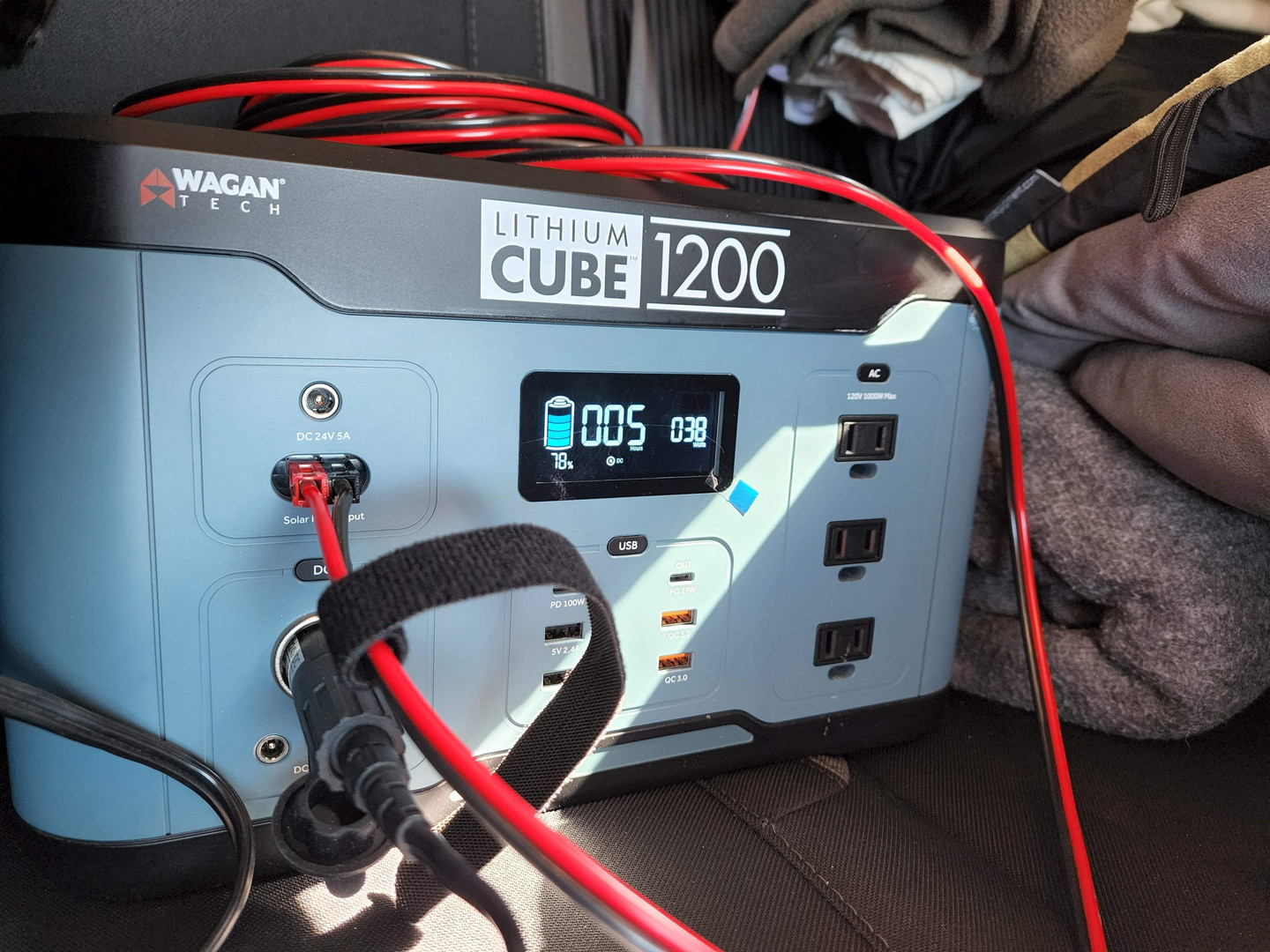
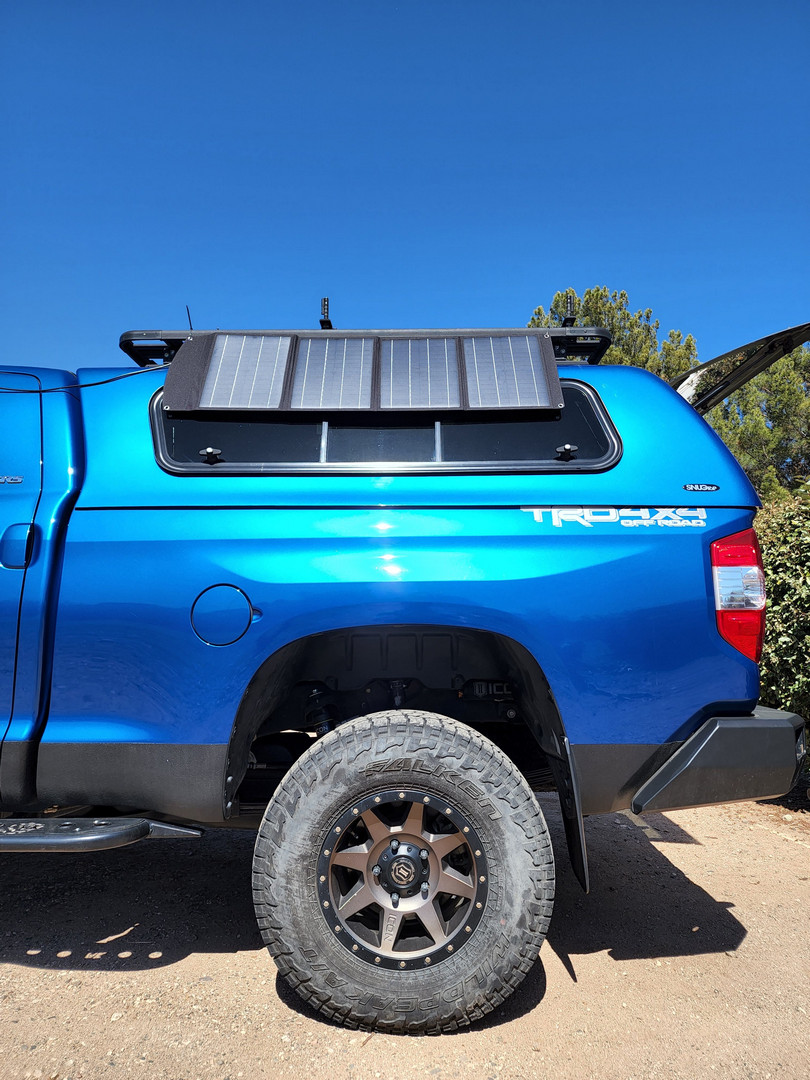
Using the Lithium cube is about as easy as it gets. Just set the unit where it’s needed, plug in the devices that you need to power, turn on their respective busses, and you’re all set. The Lithium cube can be charged while it’s in use, making this a great solution for vehicle-based use where it’s charging off of your vehicle while its running, and can be charged off of solar when you are parked.

Over the last year, the Lithium Cube has travelled from the sand dunes on the US / Mexico border to the Idaho / Montana border supporting vehicle-based adventure. It hasn’t cared about being in triple digit heat, and it’s tolerated cold quite well. Remember all batteries suffer from diminished performance when cold. No matter where I’ve been or what I’ve been doing, using the Lithium Cube has worked without fault, which is more than I can say for two other brands of portable lithium batteries, both of which were purchased new and suffered a failure in the time that I’ve been using the Lithium Cube 1200.
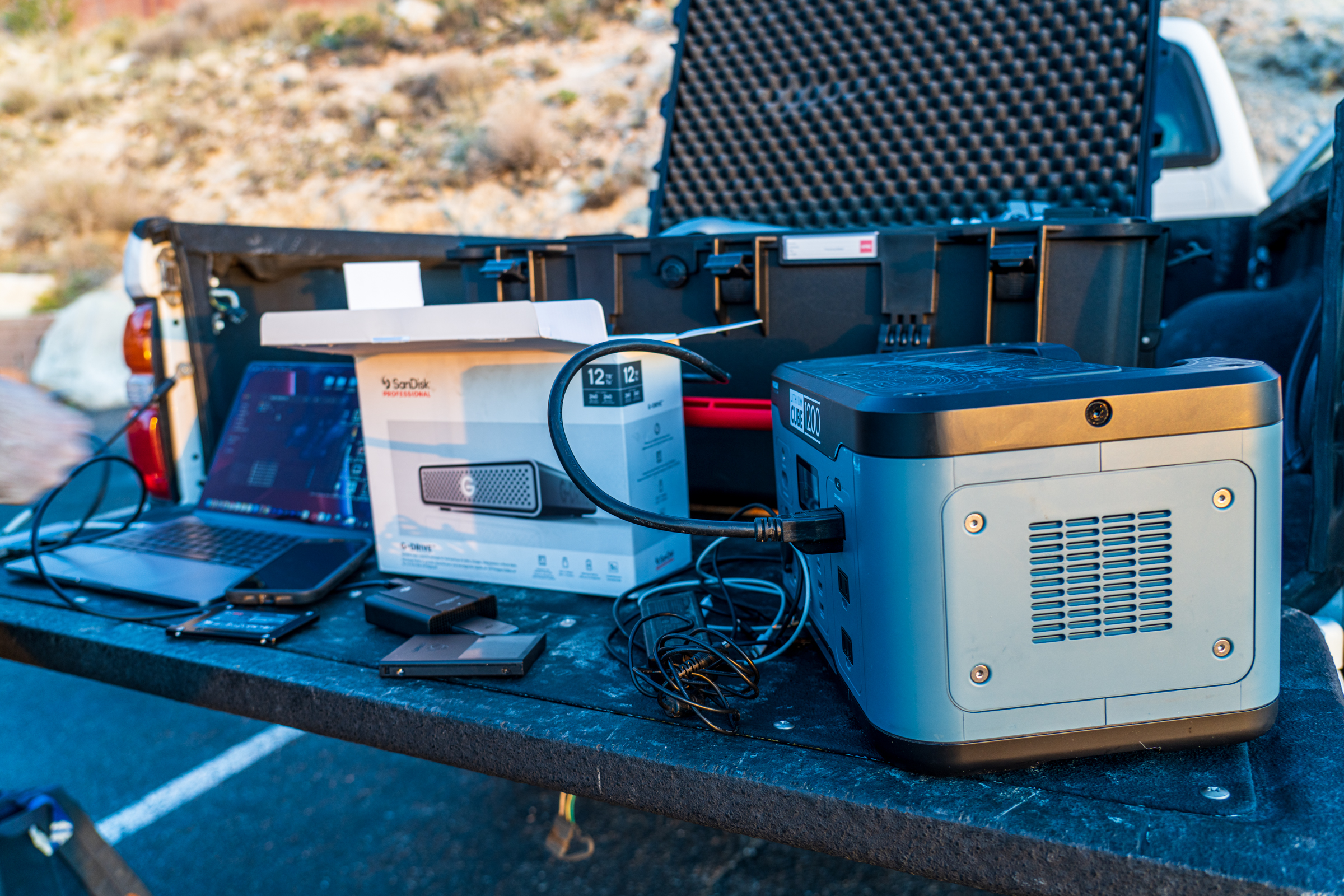
The only drawback to the Lithium Cube is it’s auto-off feature, where the unit will turn off a buss after it detects that it’s not providing power. While this doesn’t seem to be an issue when running something like a fridge, if you’re planning on charging your phone overnight with the lithium cube, know that once your phone is full the cube will switch off. Assuming that you’re sleeping for eight hours, that’s seven or so hours your phone is back on it’s internal battery, meaning you will not have a full phone when you wake up in the morning. I appreciate the intention here, but I really wish Wagan would place the responsibility for turning off busses when they are not needed on the user.
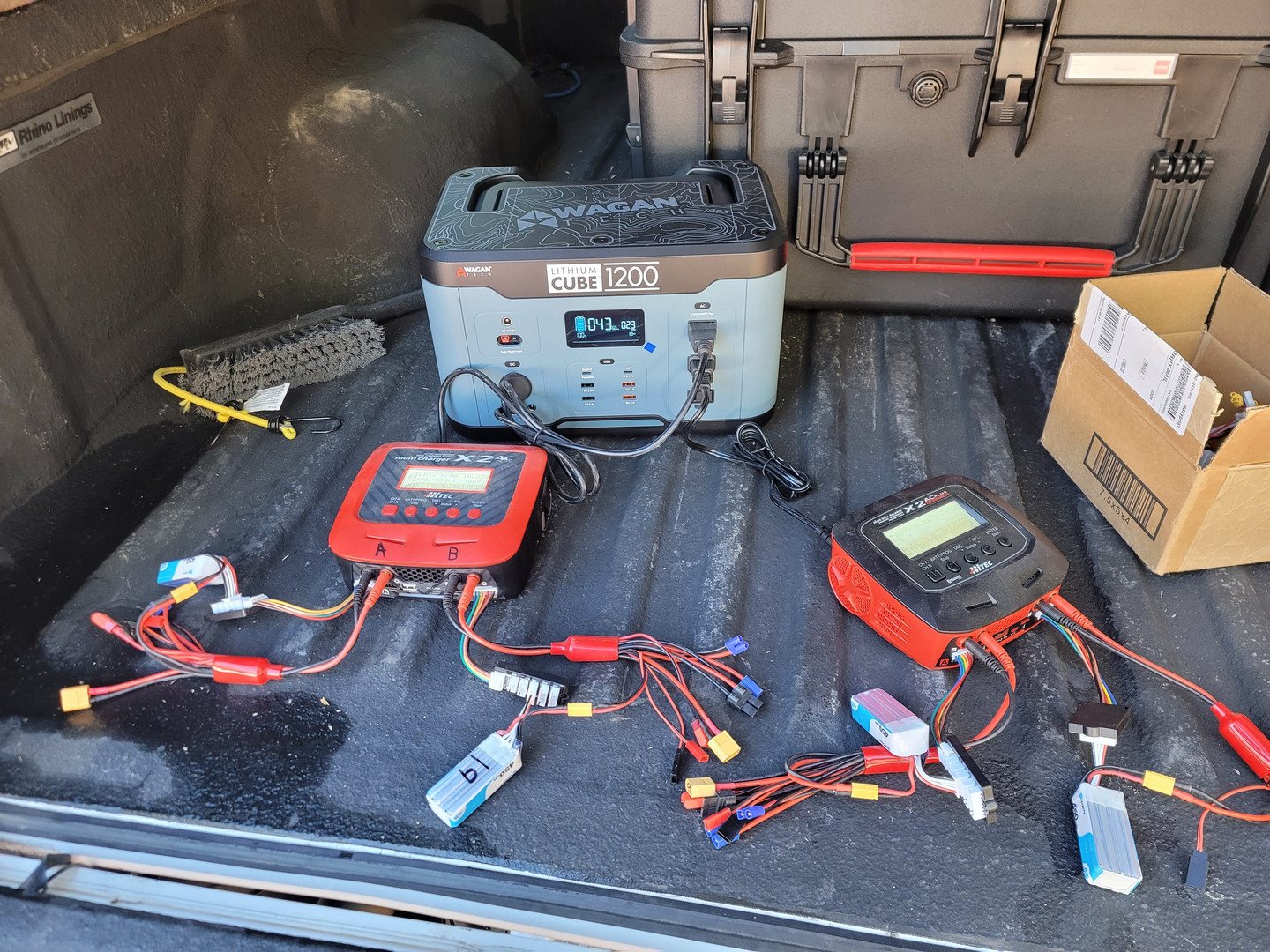
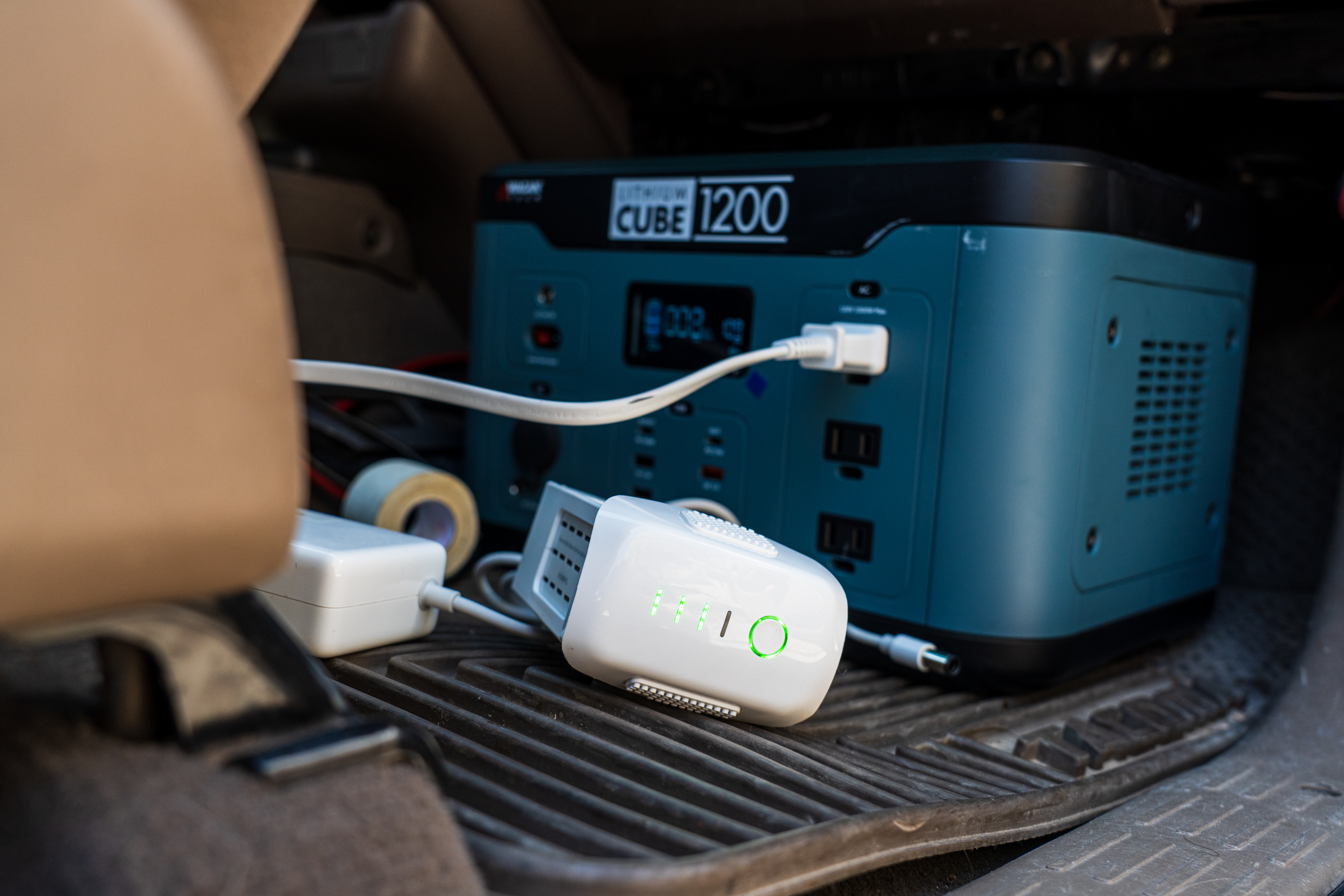
All said and done, the Wagan Tech Lithium Cube 1200 has proven to be a solid choice for a large portable power supply. The unit has plenty of options for power output packed into a small and light form factor, meaning that taking a serious amount of power to anywhere you need it isn’t a huge undertaking. The Lithium Cube has held up to thousands of miles of travel, extensive use doing everything from powering a fridge and phone to more extensive loads like powering a grinder and other high-watt loads just to put unit thought its paces. There may have also been a brisket smoking that was saved when the power went out thanks to the Lithium Cube being able to power a Traegar. Its easy to charge the Lithium Cube too, whether from the sun, the included AC or DC charge cables, or my favorite – USB PD, because I’m all for having to pack one fewer accessory. If you’re in the market for a Lithium power supply, the Wagan Tech Lithium Cube 1200 should definitely be on your list.









 Every recovery situation is unique, so there’s no way I can say if you’re stuck on X-surface dig down to Y-inches and you’ll magically get out. There are just too many factors in play for a hard and fast answer like that. The general guidance is that if you’re in soft surfaces you’re going to need to dig deeper than in harder pack surfaces. When I was using the Deadman in wet beach sand, I was able to get away with digging a ~16 inch deep hole on my second pull, after realizing that my first hole at over two feet was way more than I needed to do. Good thing my inner child likes to dig holes. Likewise, in spring snowpack (a very wet, packable snow that’s great for making snowballs) I started with a hole that was nearly three feet deep which was seriously overkill too. But, I’d rather err on the safe side – and besides, digging is good exercise. The good news is, that if you pull the Deadman out while winching, you can just bury him deeper, which is more than can be said for other earth anchors which can only hold on to so much soil.
Every recovery situation is unique, so there’s no way I can say if you’re stuck on X-surface dig down to Y-inches and you’ll magically get out. There are just too many factors in play for a hard and fast answer like that. The general guidance is that if you’re in soft surfaces you’re going to need to dig deeper than in harder pack surfaces. When I was using the Deadman in wet beach sand, I was able to get away with digging a ~16 inch deep hole on my second pull, after realizing that my first hole at over two feet was way more than I needed to do. Good thing my inner child likes to dig holes. Likewise, in spring snowpack (a very wet, packable snow that’s great for making snowballs) I started with a hole that was nearly three feet deep which was seriously overkill too. But, I’d rather err on the safe side – and besides, digging is good exercise. The good news is, that if you pull the Deadman out while winching, you can just bury him deeper, which is more than can be said for other earth anchors which can only hold on to so much soil.


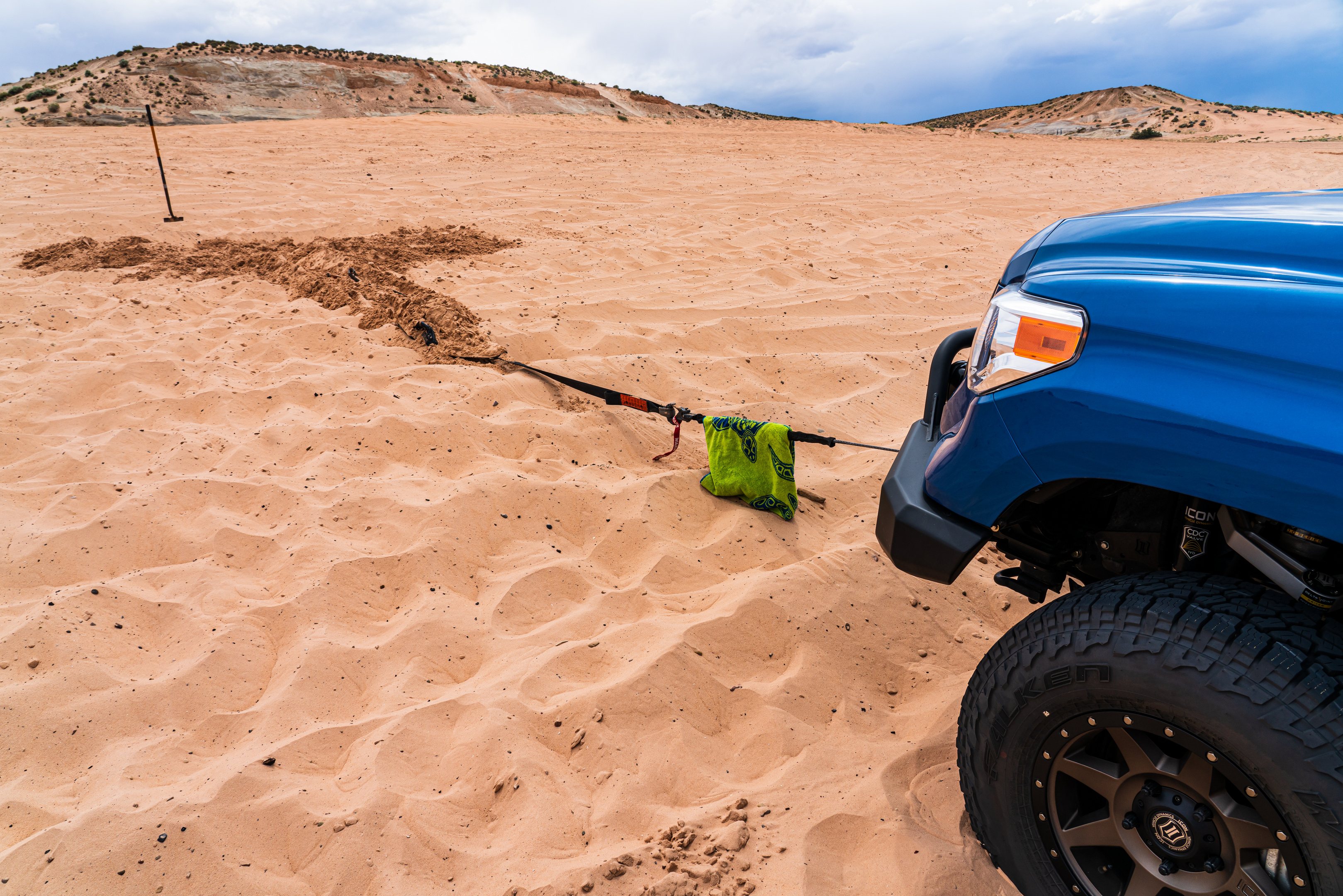



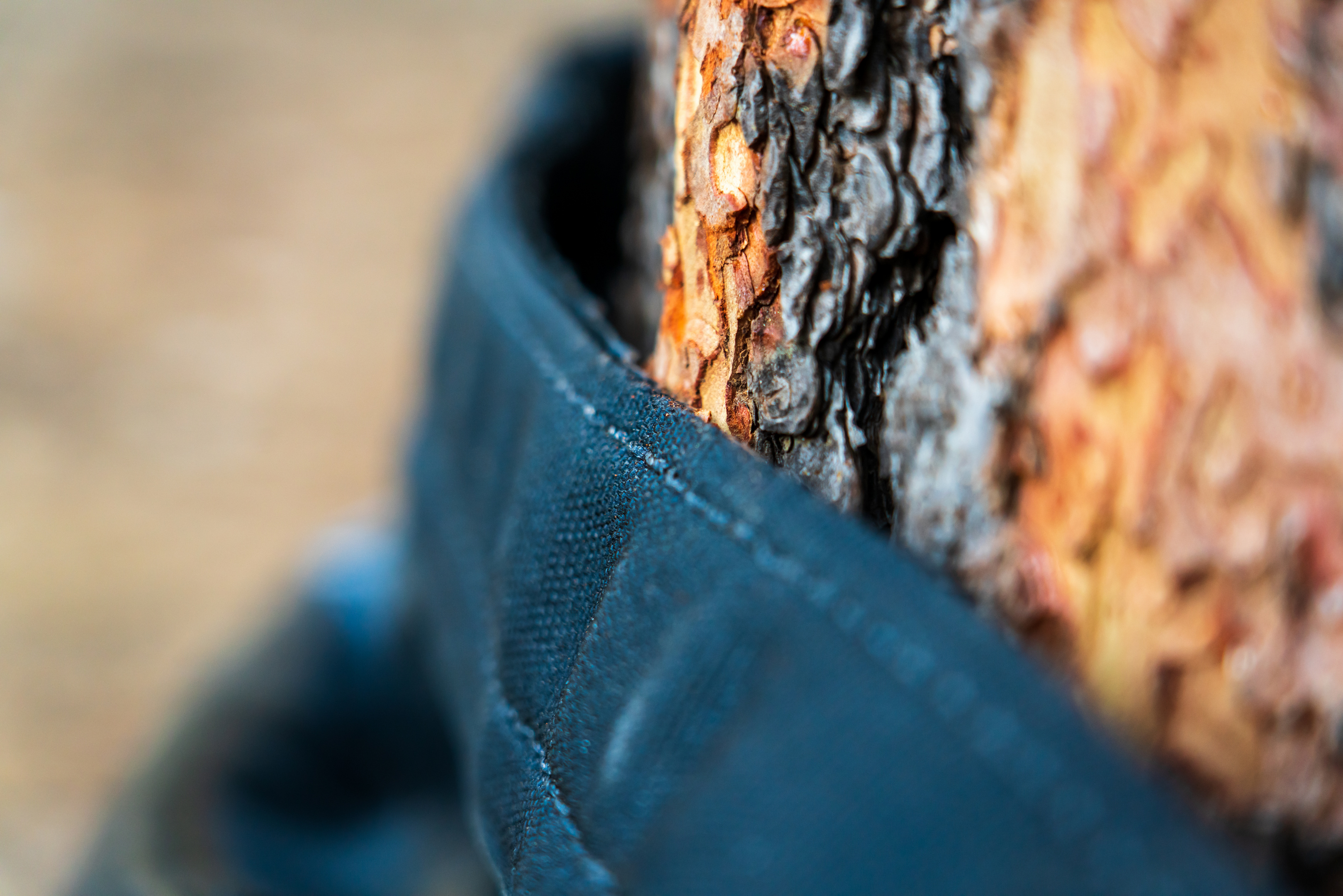 The original Deadman has arms and legs that are made of polyester, much like you would find on a quality recovery strap. While polyester straps can certainly take some serious use, they’re also prone to damage by abrasion and grit exposure, which is why the ruggedized Deadman has his arms and legs sleeved in beefy Cordura nylon. Think of a Cordura winch protector for your synthetic winch line, and you’ll get the idea. Soil loves to work it’s way into your straps and abraid them from within each time the strap is put under tension, and likewise running a strap over a sharp root, rock, or other sharp thing can cut the fibers and compromise the strap. The ruggedized Deadman has completely sleeved straps, so everything from the loop ends at the ends of his arms and legs to the middle of his body is protected. That’s right, there’s no exposed polyester to worry about damaging. Whether you’re burying the ruggedized Deadman in soil that has sharp embedded rocks, or using it to ‘hug’ something like a tree (think tree saver) or boulder, the addition of Cordura nylon “armor” allows the Deadman to better withstand use in abrasive conditions. If that perfect anchor point looks like it might hurt if you were to hug it, tag the Deadman in to do the hugging for you.
The original Deadman has arms and legs that are made of polyester, much like you would find on a quality recovery strap. While polyester straps can certainly take some serious use, they’re also prone to damage by abrasion and grit exposure, which is why the ruggedized Deadman has his arms and legs sleeved in beefy Cordura nylon. Think of a Cordura winch protector for your synthetic winch line, and you’ll get the idea. Soil loves to work it’s way into your straps and abraid them from within each time the strap is put under tension, and likewise running a strap over a sharp root, rock, or other sharp thing can cut the fibers and compromise the strap. The ruggedized Deadman has completely sleeved straps, so everything from the loop ends at the ends of his arms and legs to the middle of his body is protected. That’s right, there’s no exposed polyester to worry about damaging. Whether you’re burying the ruggedized Deadman in soil that has sharp embedded rocks, or using it to ‘hug’ something like a tree (think tree saver) or boulder, the addition of Cordura nylon “armor” allows the Deadman to better withstand use in abrasive conditions. If that perfect anchor point looks like it might hurt if you were to hug it, tag the Deadman in to do the hugging for you.

 Even when you’re not in need of a winch anchor, the Deadman can prove to be a useful piece of kit. If you’re just a few feet short of where you need to tie your winch into, the Deadman can also work as a winch extension. Tree down in the trail? Use the Deadman to drag it out of the way. Need to haul a boatload of firewood back to camp? Get a buddy and use the Deadman as a giant litter. Taking on some trail repairs on your rig? Unpack the Deadman and use it like a tarp so you don’t have to crawl in the mud under your rig. It’s extremely versatile – just remember to respect his Working Load Limit and you’ll be good to go. NOTE: Although both the original Deadman and the Ruggedized Deadman can be used as winch extensions, they are NOT rated for use in snatching a vehicle or in a kinetic recovery situation.
Even when you’re not in need of a winch anchor, the Deadman can prove to be a useful piece of kit. If you’re just a few feet short of where you need to tie your winch into, the Deadman can also work as a winch extension. Tree down in the trail? Use the Deadman to drag it out of the way. Need to haul a boatload of firewood back to camp? Get a buddy and use the Deadman as a giant litter. Taking on some trail repairs on your rig? Unpack the Deadman and use it like a tarp so you don’t have to crawl in the mud under your rig. It’s extremely versatile – just remember to respect his Working Load Limit and you’ll be good to go. NOTE: Although both the original Deadman and the Ruggedized Deadman can be used as winch extensions, they are NOT rated for use in snatching a vehicle or in a kinetic recovery situation. About the only downside to the Deadman, ruggedized or not, is that you have to provide the hole to bury him in in when you’re burying dead things to create an anchor. Depending on the type of surface you’re digging in, this can be a quick process, or something that’s going to take some real work. If you have serious aversion to physical labor, make sure you’re aware that the Deadman doesn’t just automatically create an anchor for you – you have to do the burying. And likewise, make sure you’ve got enough water on hand to keep yourself in good order if you’re going to be working hard digging a hole on a hot day. As with any recovery situation, doing a proper stuck assessment before wasting any energy can make a significant difference in how much human powered work is required to get out. For example: If you’re stuck in sand up to your frame, taking the time to remove resistance (sand) from the underside of the vehicle and around the tires, will mean that you need less winching force to get out, which means that you won’t need to dig as big of a hole to bury the Deadman in, and your winch won’t emit the dreaded magic smoke. Each recovery situation is unique. Do a good assessment, and figure out how to best employ the tools and skills you have.
About the only downside to the Deadman, ruggedized or not, is that you have to provide the hole to bury him in in when you’re burying dead things to create an anchor. Depending on the type of surface you’re digging in, this can be a quick process, or something that’s going to take some real work. If you have serious aversion to physical labor, make sure you’re aware that the Deadman doesn’t just automatically create an anchor for you – you have to do the burying. And likewise, make sure you’ve got enough water on hand to keep yourself in good order if you’re going to be working hard digging a hole on a hot day. As with any recovery situation, doing a proper stuck assessment before wasting any energy can make a significant difference in how much human powered work is required to get out. For example: If you’re stuck in sand up to your frame, taking the time to remove resistance (sand) from the underside of the vehicle and around the tires, will mean that you need less winching force to get out, which means that you won’t need to dig as big of a hole to bury the Deadman in, and your winch won’t emit the dreaded magic smoke. Each recovery situation is unique. Do a good assessment, and figure out how to best employ the tools and skills you have.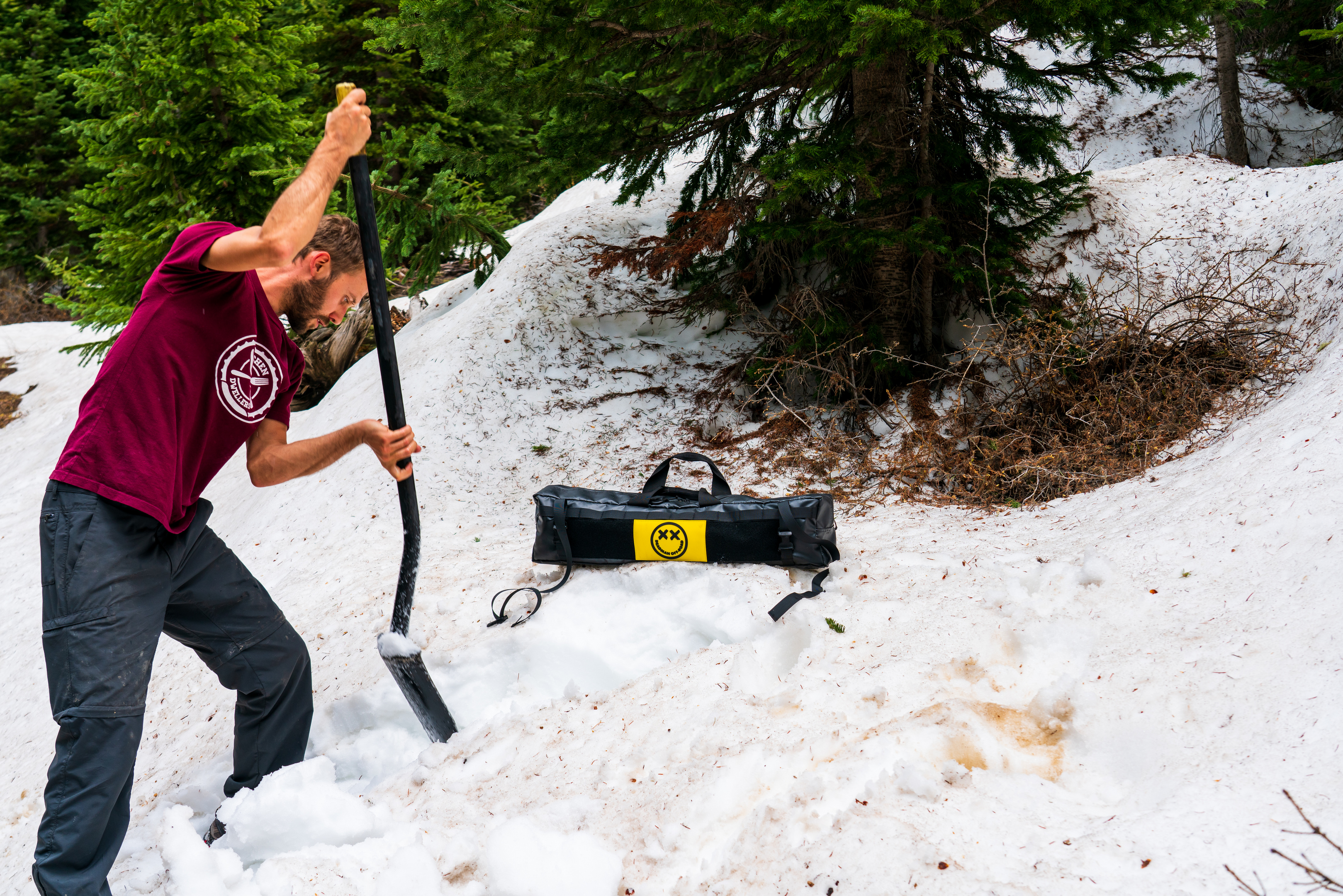
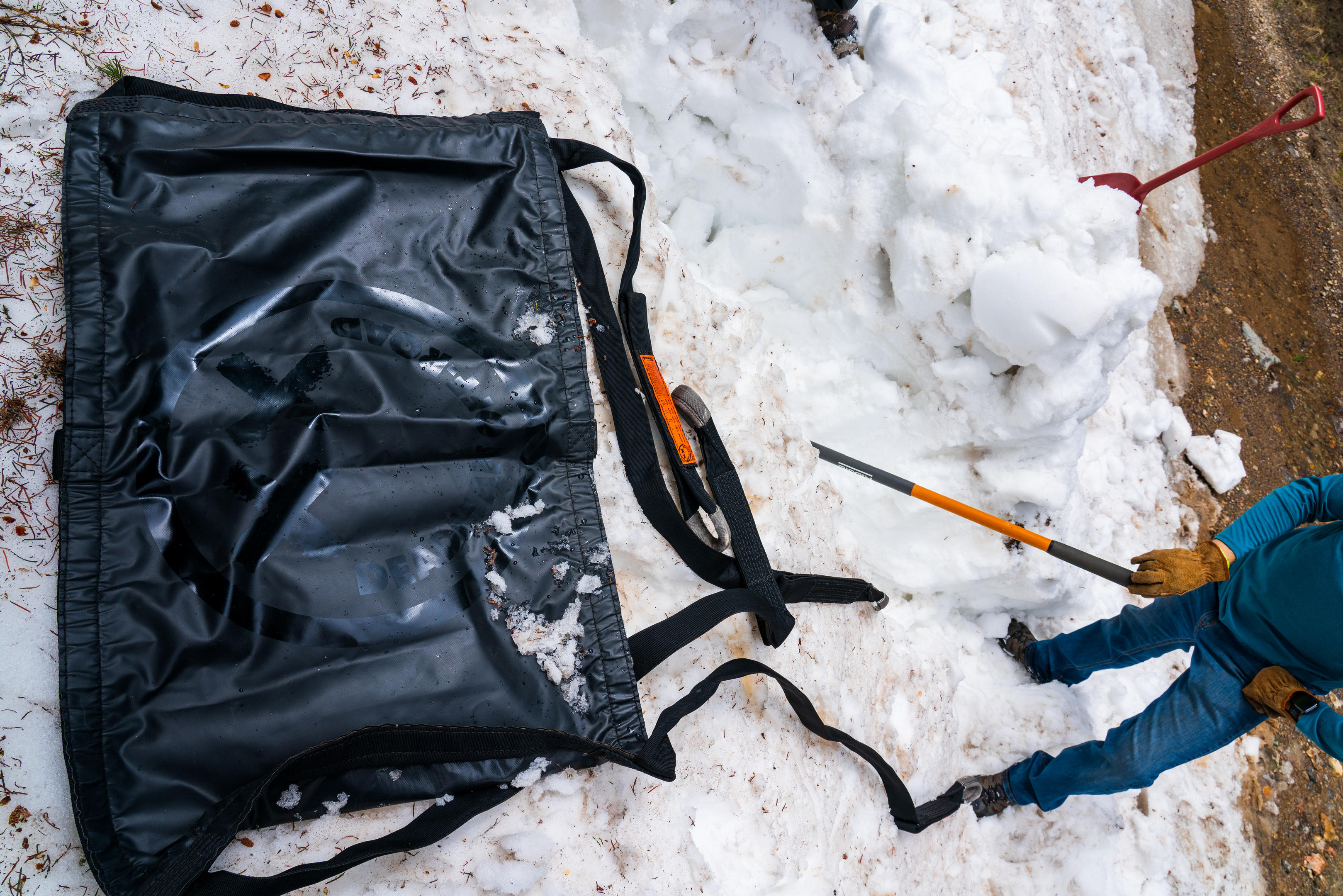
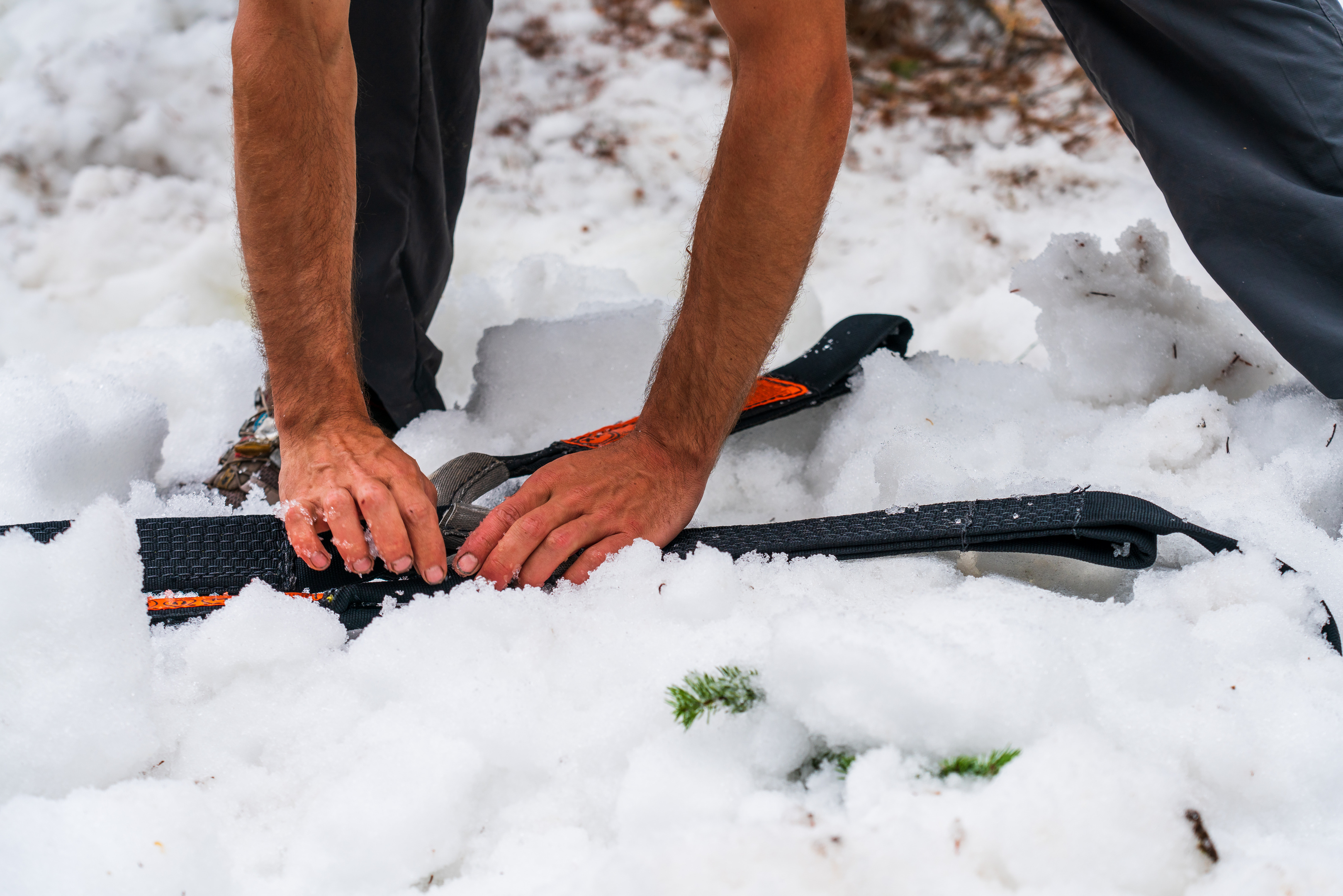





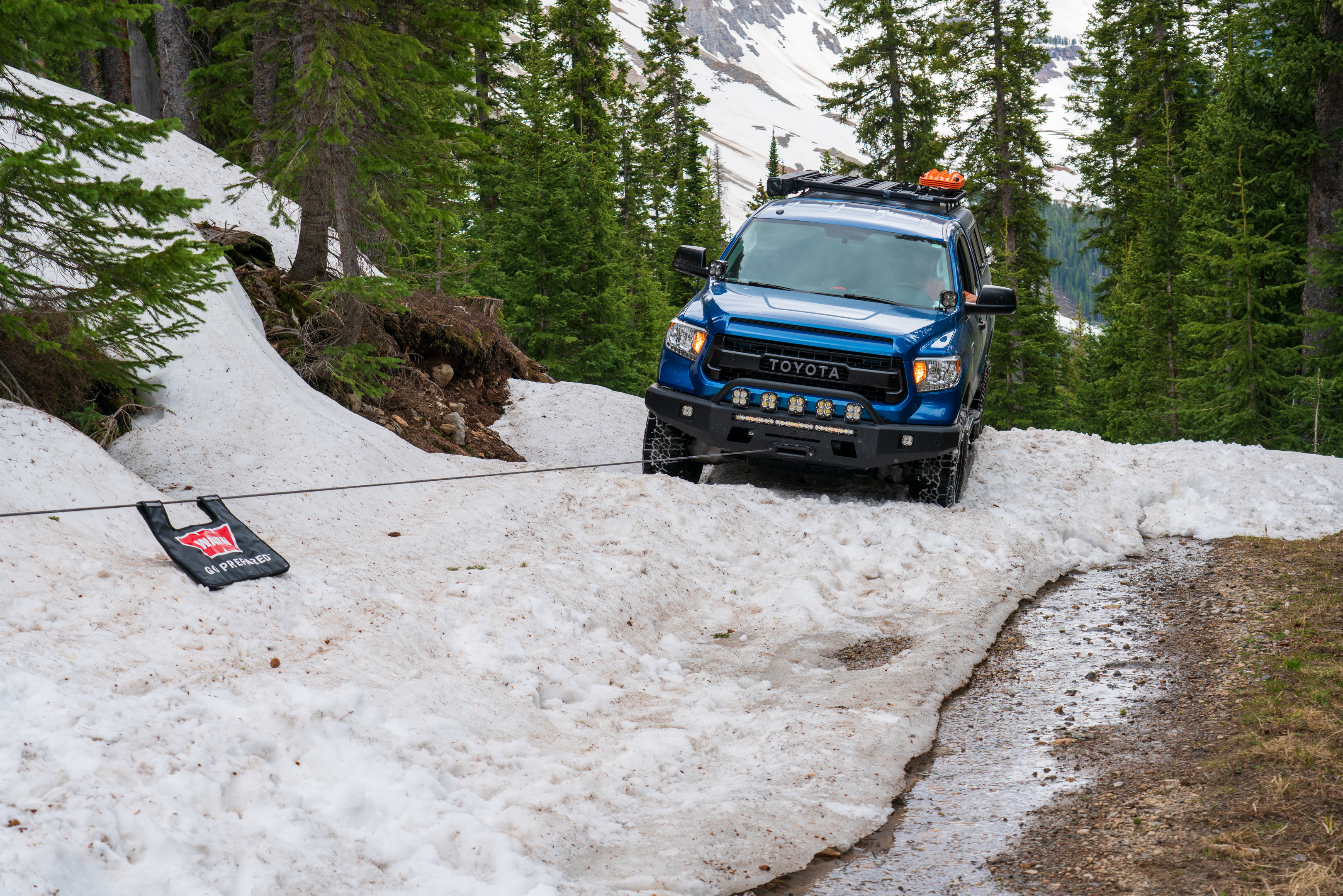
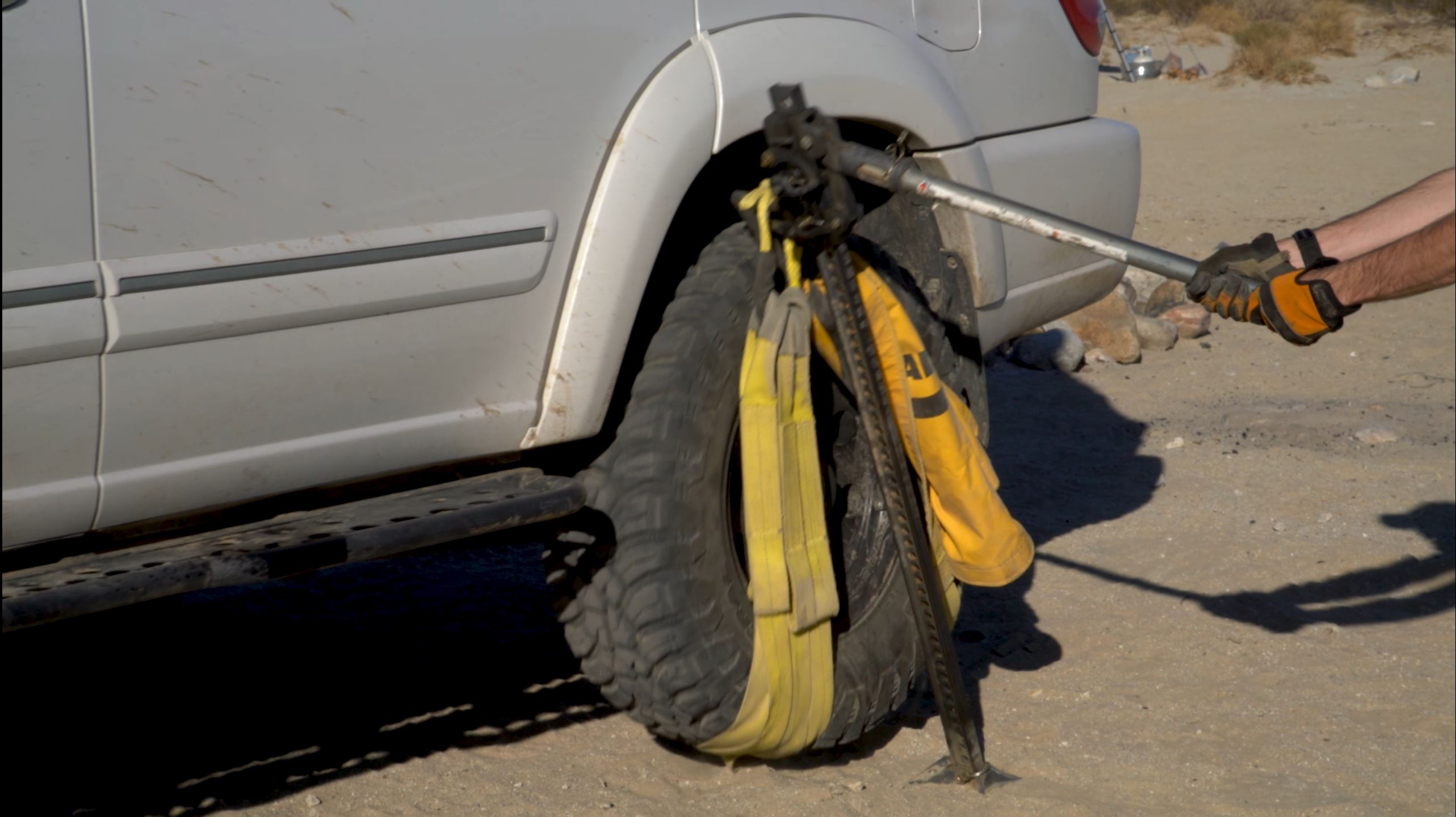
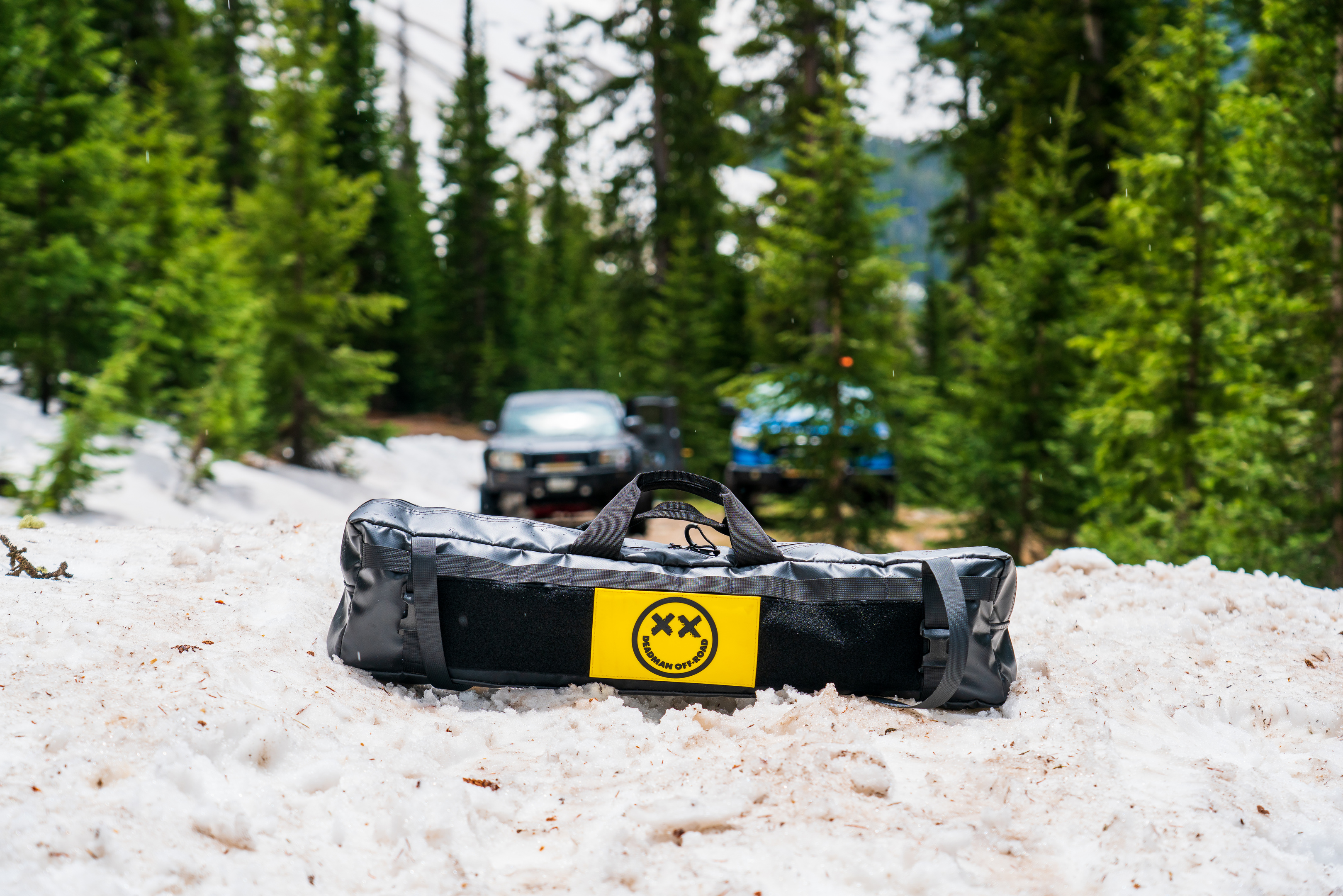 FULL DISCLOSURE:
FULL DISCLOSURE: